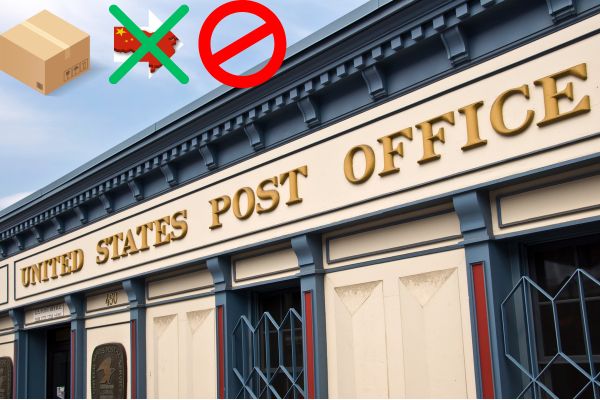The United States Postal Service (USPS) has restarted parcel deliveries from China and Hong Kong. The brief suspension, announced late Tuesday and reversed early Wednesday, raised concerns for online businesses and shoppers.
USPS did not give a clear reason for the temporary halt, but experts believe it was linked to recent trade policy changes.
Why USPS Stopped Accepting Packages
A major reason for the disruption was the removal of the de minimis exemption, a rule that allowed goods worth less than $800 to enter the U.S. without duties or inspections.
This exemption made it easy for companies like Shein and Temu to ship low-cost items directly to American buyers.
Now that the exemption is gone, every package from China and Hong Kong must go through customs checks and be taxed.
This has added strain to the shipping system. USPS released a statement saying, “We are working closely with Customs and Border Protection to collect new tariffs while keeping deliveries running smoothly.”
Impact on Online Shopping and Businesses
The old rule helped millions of Americans buy cheap products from overseas without delays. Now, the new system could make things more expensive and slower.
Christine McDaniel, an expert at George Mason University, explained, “With millions of packages arriving daily, inspecting and taxing all of them will be a huge challenge. This change could reshape online shopping.”
A 2023 U.S. congressional report found that nearly 50% of de minimis shipments came from China. In 2024, more than 4 million such packages arrive in the U.S. every day. With tariffs now in place, shipping companies and retailers must adjust quickly to avoid long delays and price hikes.
Challenges for Shipping and Customs
The U.S. Customs and Border Protection (CBP) already struggles with limited staff and resources. Now, with every package requiring inspection, delays could become much worse.
Chelsey Tam, a shipping industry analyst, noted, “Handling 4 million packages daily under these new rules is a big challenge. Even with extra resources, it will take time to adjust.”
Major shipping carriers like DHL, FedEx, and UPS are closely watching these changes. DHL has promised to help customers navigate the new system, while FedEx and UPS have not yet shared their plans.
China quickly responded to the new U.S. tariffs with its own economic measures. On Tuesday, Beijing announced new taxes on American goods, including:
- 15% tariffs on coal and liquefied natural gas
- 10% tariffs on crude oil, farm machinery, and large vehicles
China also imposed export limits on over two dozen metal products and added two U.S. companies—Illumina and PVH Group—to its “unreliable entities” list.
China’s Foreign Ministry urged the U.S. to avoid turning trade into a political issue. Spokesperson Lin Jian said, “We ask the U.S. to stop unfairly targeting Chinese businesses.”
Meanwhile, diplomatic relations remain tense. Former President Donald Trump, who earlier suggested he might speak with Chinese leader Xi Jinping, later said he was “in no rush” to hold discussions. These ongoing trade disputes are adding uncertainty to global markets.
What This Means for American Shoppers and Businesses
While USPS resuming deliveries is good news, long-term challenges remain. If customs inspections and tariffs continue, online shopping from China may become slower and more expensive.
Experts warn that businesses must prepare for shipping delays and higher costs. Consumers who rely on cheap imports may see longer wait times and price increases.
The U.S. removed the de minimis exemption to reduce unfair competition from foreign sellers and to collect more tax revenue. Supporters say it will help American manufacturers and level the playing field. But critics warn that it may hurt small businesses and consumers who depend on affordable imports.
The USPS decision highlights the challenge of enforcing new trade policies without disrupting global commerce. While package deliveries have resumed for now, the future of international shipping remains uncertain. Policymakers must find a way to balance trade enforcement with keeping goods flowing efficiently






